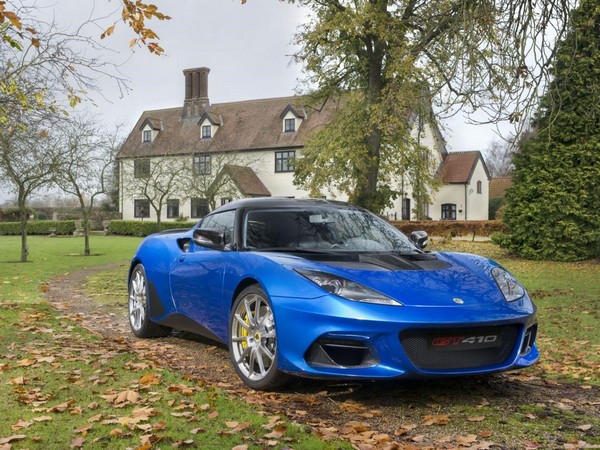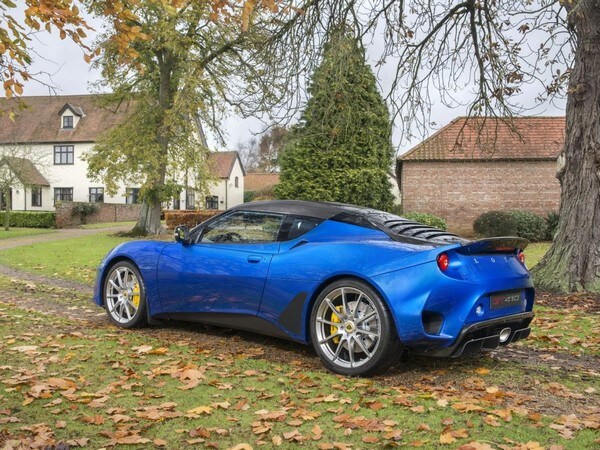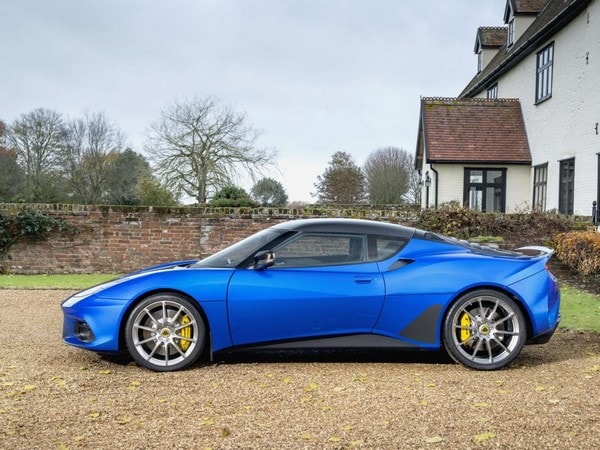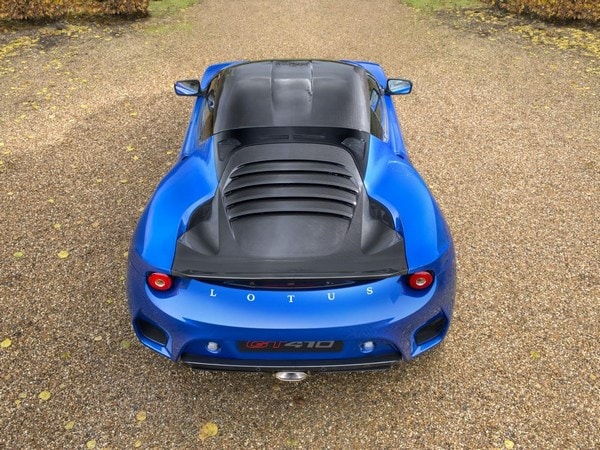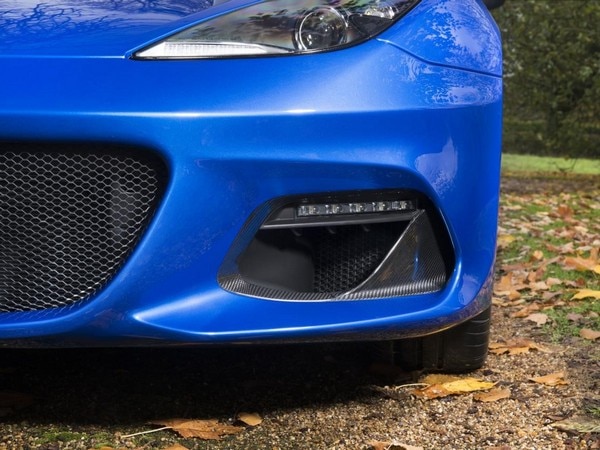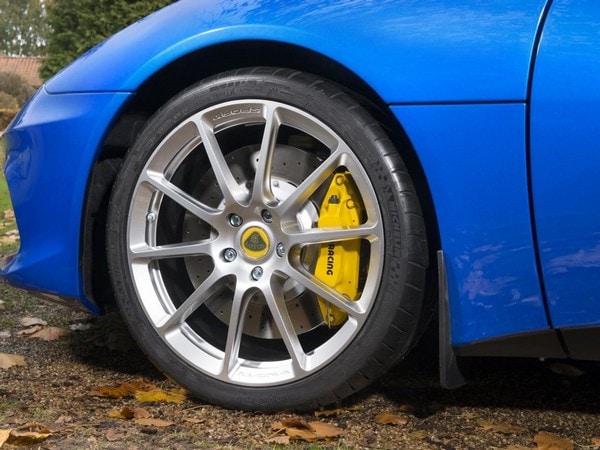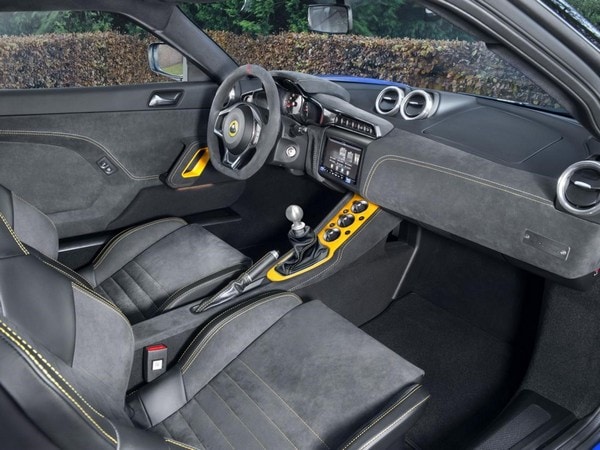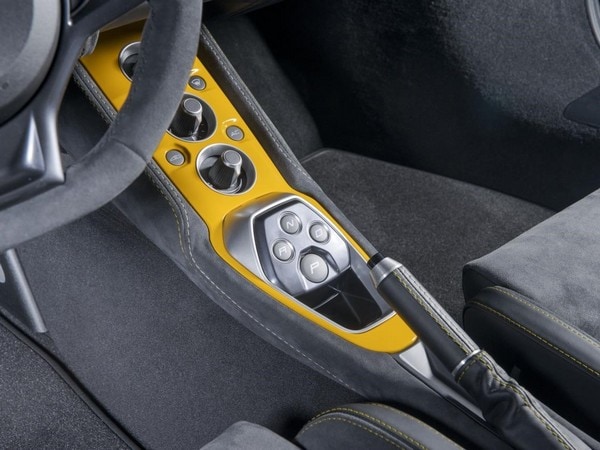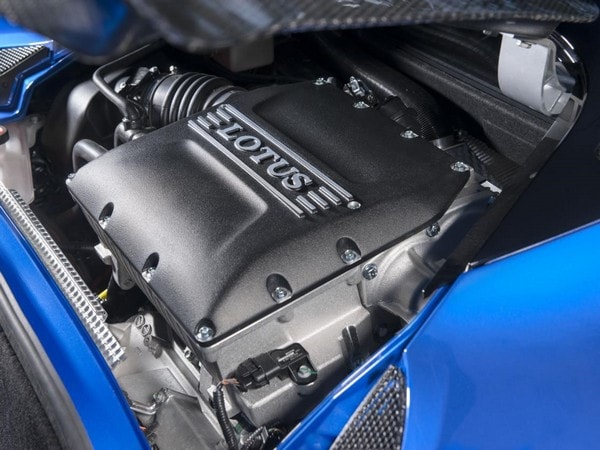Lotus founder Colin Chapman had an unequivocal position concerning the relationship between vehicle mass and performance. “Adding power makes you faster on the straights,” he observed. “Subtracting weight makes you faster everywhere.” Chapman has been gone for almost 40 years, but his philosophy continues to be a core tenet of the company that bears his name.
This evolution of the Evora is yet another example. Tracing its development to the more extreme Evora 430 GT, the mid-engine sports car is 62 pounds lighter than its immediate predecessor, the Sport 410, weighing in at 2,910 pounds (2,934 pounds with automatic transmission).
Like previous entries in the Evora 400 series, the 410 GT Sport features composite body panels and aluminum chassis components, plus increased use of carbon fiber: roof panel, rear spoiler, and the louvered rear hatch sheltering engine and transaxle.
Owners can reduce the curb weight even more by ordering the optional titanium exhaust (saves 22 pounds), and/or multi-adjustable Ohlins TTX aluminum shock absorbers, part of the optional race suspension option (29 pound reduction).
The standard suspension features Bilstein sport dampers; Eibach springs; large cross-drilled brake rotors with 4-piston calipers; and Michelin Pilot Sport tires on aluminum wheels (235/35-19 front, 285/30-20 rear). In addition to the race suspension package, and forged alloy wheels, a more civilized touring suspension option is available.
Also: Get your first look at the new and redesigned cars of 2019
Aero upgrade
Though not as aggressive as the track-oriented 430 GT, the new car’s profile generates 50 percent more downforce than the Sport 410—216 pounds at 190 mph, according to Lotus.
Power—410 horsepower, 310 lb-ft of torque—is supplied by Evora’s familiar Toyota-sourced 3.5-liter supercharged all-aluminum V6, sending thrust to the limited slip rear differential via a 6-speed manual or (optional) 6-speed automatic gearbox.
The 190 mph top speed goes with the manual transmission; the automatic version tops out at 171 mph. However, the paddle-shift automatic is a tick quicker to 60 mph, 3.9 seconds versus 4.0, according to Lotus.
Offered in 2-seat and 2+2 body styles, the Evora GT 410 Sport will be available to U.S. buyers this summer. Lotus has not posted U.S. prices yet, but the base MSRP for the 2016 Evora 400 was almost $92,000. Expect the 2018 GT 410 to edge significantly closer to the $100,000 frontier.
